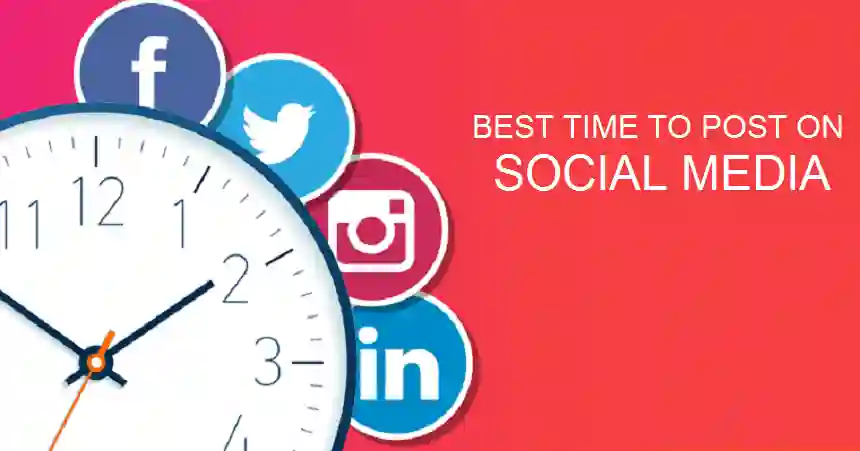In the digital age, where attention spans are short and competition for engagement is fierce, timing is everything when it comes to social media. Crafting captivating content is crucial, but equally important is posting it at the right time to maximize its impact. The science of scheduling on social media is a multidimensional puzzle, influenced by various factors, from platform algorithms to audience behavior. In this article, we delve into the intricate world of finding the ideal posting times on social media.
The Significance of Timing
Posting on social media platforms at the optimal times can be the difference between content that goes viral and content that gets lost in the abyss of the internet. Here are some key reasons why timing matters:
1. Algorithm Advantage
Social media platforms employ complex algorithms that determine what content appears on users’ feeds. These algorithms often prioritize recent and engaging content. By posting at the right time, you increase the chances of your content being seen by more users, as it’s more likely to appear at the top of their feeds.
2. Audience Availability
Different audiences have different online habits. Understanding when your target audience is most active can help you tailor your posting schedule to reach them when they are most likely to see and engage with your content.
3. Competition Avoidance
Analyzing your competitors’ posting habits can reveal gaps in their schedules. Posting when your competitors are less active can help your content stand out and receive more attention from your shared audience.
4. Global Reach
If you have an international audience, finding the right posting times becomes even more critical. Posting at times that cater to different time zones ensures that your content reaches a global audience effectively.
Platform-Specific Timing
Each social media platform has its own set of ideal posting times based on the behaviors and preferences of its users. Here are some platform-specific guidelines:
1. Facebook
Best Times: Weekdays, especially Wednesday, between 11 AM and 1 PM.
Why: People tend to check Facebook during work breaks and lunch hours.
2. Instagram
Best Times: Weekdays, particularly Wednesday and Friday, between 10 AM and 3 PM, with a peak at 11 AM.
Why: Instagram users are often most active during mid-morning and early afternoon breaks.
3. Twitter
Best Times: Weekdays, around lunchtime (12 PM) and late afternoon (5 PM).
Why: Twitter is a platform where users frequently check for news and updates during work breaks.
4. LinkedIn
Best Times: Tuesday, Wednesday, and Thursday, between 7 AM and 9 AM and 5 PM to 6 PM.
Why: LinkedIn is a professional network, and users are more active during commuting hours and just before and after work.
The Art of Audience Analysis
While platform-specific timing guidelines are helpful, the ideal posting times can vary depending on your unique audience. Here’s how to analyze your audience and refine your schedule:
- Utilize Analytics Tools: Most social media platforms provide insights into when your followers are most active. Use these tools to your advantage.
- Consider Demographics: The age, location, and profession of your audience can influence their online behavior. A global audience may require a more strategic posting schedule.
- Experiment and Adjust: Don’t be afraid to experiment with different posting times and analyze the engagement metrics. Over time, you can refine your schedule based on what works best for your audience.
Adapting to Time Zones
For brands and influencers with an international following, managing time zones is essential:
- Identify Key Markets: Determine where the majority of your audience is located.
- Use Scheduling Tools: Social media management platforms like Buffer or Hootsuite allow you to schedule posts according to different time zones, ensuring your content reaches all regions at optimal times.
- Create a Balanced Schedule: Aim for a posting schedule that caters to various time zones without overwhelming any one audience.
Content Type and Timing
The type of content you’re sharing can also impact the ideal posting time:
- Educational and Informative Content: This content often performs well in the morning when users are in a learning mindset.
- Entertainment and Lifestyle Content: Consider posting during evenings and weekends when people are looking for leisurely content.
- Interactive Content: Polls, quizzes, and questions may gain more traction during midday breaks when users have a moment to engage.
Evolving Trends and Consistency
Social media trends and user behavior evolve over time. Stay updated with the latest research and industry insights to adapt your posting strategy accordingly. Additionally, consistency in posting is crucial. It helps build anticipation among your audience and establishes a routine that they can rely on.
Conclusion
The science of scheduling on social media is a dynamic and ever-evolving field. To truly unlock the power of timing, you must understand your audience, adapt to different time zones, consider content type, and stay informed about evolving trends. Ultimately, the optimal posting time isn’t just about when the most people are online; it’s about when your specific audience is most active and receptive. With a strategic approach to scheduling, you can ensure that your content not only reaches your audience but also resonates with them, maximizing its impact in the digital world.

